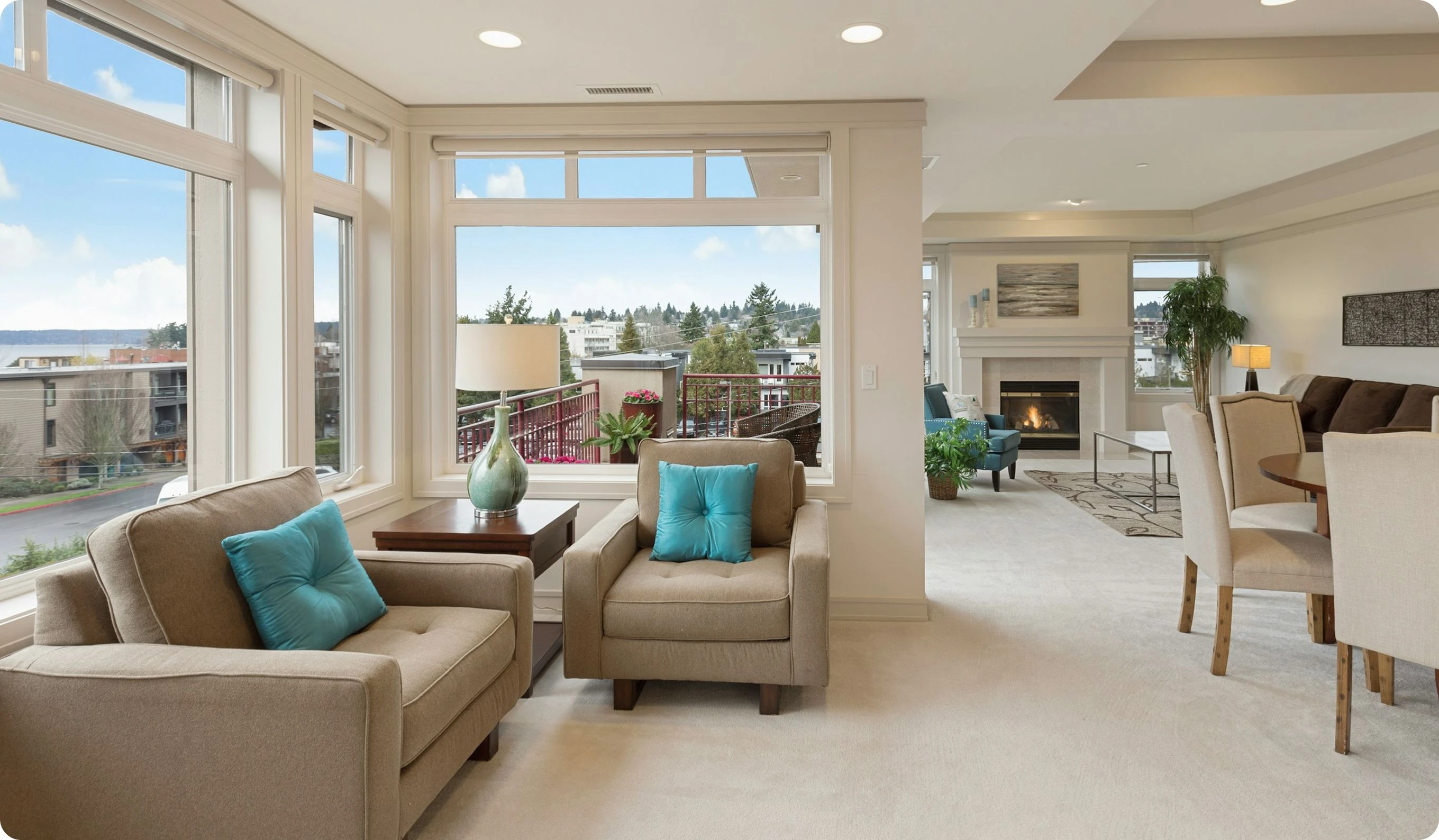Premium Commercial Hubs in Angola – Retail & WorkplaceAtlantic coast with growing urbandevelopment zones

Best offers
in Angola
Benefits of investment in
Angola real estate
Resource-rich economy with urban expansion
Luanda’s infrastructure is growing fast, with modern projects and international interest.
Rental demand driven by oil and business sectors
Expats and executives create steady need for housing in premium areas.
Long-term potential in an emerging market
Early investors benefit from price entry and future growth.
Resource-rich economy with urban expansion
Luanda’s infrastructure is growing fast, with modern projects and international interest.
Rental demand driven by oil and business sectors
Expats and executives create steady need for housing in premium areas.
Long-term potential in an emerging market
Early investors benefit from price entry and future growth.

Useful articles
and recommendations from experts
All
Popular
Global Transactions
Angola
International Payments to Angola — SWIFT USD/EUR to AOA, Bank & Branch Codes (2025)
Simple routes, clear fees and cut-off timing for faster, predictable posting
22.08.2025

All
Popular
Global Transactions
Angola
Pay for Property in Angola from Abroad — Clean USD/AOA Bank Transfers
Verified details, short references and timing for calm, on-time closings
22.08.2025

Unlocking Growth: Commercial Real Estate in Angola
Market Overview & Tenant Demand
Commercial real estate in Angola has evolved from an oil-centric market to a diversified ecosystem driven by finance, logistics, tourism and technology. In Luanda’s central business districts—Talatona, Miramar and the Port Zone—modern office towers cater to international banks, import-export companies and emerging tech consultancies. These tenants prioritize flexible floor plans, backup power solutions and high-speed internet, creating consistent demand for grade-A office space. Outside the capital, secondary cities such as Benguela, Huambo and Lubango have gained traction among light-industrial operators, warehousing firms and agricultural exporters. Logistics parks near upgraded rail terminals and highway junctions serve mining companies moving minerals inland, while bonded warehouses adjacent to Lobito and Soyo ports support growing export volumes.
Retail-led mixed-use developments in urban centres blend duty-free outlets, food courts and small office suites, attracting both local shoppers and regional visitors. These projects often include experiential concepts—pop-up galleries, craft markets and entertainment zones—that extend dwell time and boost daily foot traffic. Hospitality properties around the new convention centre and future exhibition venues benefit from steady conference bookings, while mountain-border towns like Cuito Cuanavale and Menongue are emerging as wellness and eco-tourism retreats. Medical-clinic operators, hospitality groups and local governments partner to convert underutilized buildings into health-and-spa resorts, driving off-season occupancy. This broad tenant mix—financial services, logistics, retail, hospitality and healthcare—underpins stable leasing profiles and relative rental growth across Angolan markets.
Legal, Tax & Financing Framework
Understanding local regulations is crucial for successful investment in commercial real estate in Angola. The government grants leasehold concessions—typically 25 to 50 years, renewable for similar terms—instead of freehold titles. These concessions define permitted use, required investment commitments and environmental protections, ensuring clarity but requiring meticulous negotiation. Investors usually establish Sociedade por Quotas (Lda) or Sociedade Anônima (SA) vehicles to hold assets, benefiting from clear governance rules and liability protection under Angolan company law. Leasing agreements and concession contracts must be registered with the General Directorate of Registries and Notaries to secure rights and facilitate future transfers.
Angola’s fiscal regime offers incentives for developments in special economic zones (SEZs) and free-trade zones. Qualifying projects may access reduced corporate-income-tax rates—sometimes as low as 10–15%—customs-duty exemptions on imported construction materials and capital equipment, and accelerated depreciation allowances for infrastructure and utility investments. These incentives can improve after-tax yields by several percentage points compared to standard zones. Local commercial banks, such as Banco de Poupança e Crédito and Banco Angolano de Investimentos, provide term loans and project-finance facilities with loan-to-value ratios of 50–60%, priced in local kwanza and often indexed to the U.S. dollar. For larger or riskier schemes, multilateral lenders like the African Development Bank co-finance projects under blended-finance structures, reducing equity requirements for sponsors. Early coordination with legal advisors, tax specialists and credit officers ensures that financing drawdowns align with concession milestones, tax-rebate schedules and construction timelines—safeguarding cash flow throughout development and lease-up phases.
Infrastructure & Strategic Growth Corridors
Angola’s infrastructure upgrades are redefining commercial-real-estate value corridors and opening new investment frontiers. The modernization of the Port of Luanda, along with expansions at Lobito and Soyo terminals, has triggered demand for adjacent bonded warehouses, cold-storage facilities and cross-docking operations. These logistics assets serve both domestic consumption and export flows, particularly in agriculture, fisheries and mining. The Benguela Railway rehabilitation—extending from Lobito to Huambo and beyond—has unlocked inland markets, giving rise to logistics-and-industrial parks in central provinces where land remains affordable and labor pools are expanding.
In Luanda, completion of the Circular Urbana highway and new overpass projects has reduced peak-hour congestion, making suburban office parks and retail centers in Kilamba and Futungo de Belas more attractive. Future bus-rapid-transit corridors and proposed light-rail feasibility studies promise to link emerging business districts—Talatona Norte, Samba and Viana—to the CBD within 30 minutes, potentially commanding rental premiums of 5–8% for transit-adjacent properties. Power-grid enhancements, including new substations and grid stabilization programs, alongside national fiber-optic rollouts, have improved utility reliability in secondary cities such as Huambo and Lubango. This has encouraged data-center and technology-park projects geared toward domestic ICT firms and regional cloud-service providers. Investors focusing on these infrastructure-led growth corridors can capture first-mover advantages, enjoying faster lease-up and stronger rental growth as tenants follow enhanced connectivity and service levels.
Asset Classes & Value-Add Opportunities
Commercial real estate in Angola spans core office towers, logistics parks, retail complexes, hospitality resorts and mixed-use developments—each presenting unique risk-return profiles. Grade-A office assets in Luanda offer stable cash flows under multi-year leases with blue-chip tenants, while suburban business parks cater to SMEs and flex-space operators seeking lower rental rates. Logistics and warehousing facilities near ports and railheads deliver resilient demand from third-party logistics providers, agribusiness exporters and manufacturing clusters.
Retail-led mixed-use centers integrate shopping arcades, coworking lounges and small-service offices, creating diversified income streams. Hospitality assets—from convention hotels in the CBD to eco-lodges in national-park districts—produce episodic peaks during trade shows, conferences and tourism seasons. Medical-wellness resorts, converting existing structures into spa-and-clinic hybrids, tap into growing health-tourism markets, often backed by public-sector partnerships.
Value-add strategies include adaptive reuse of underperforming assets—repurposing vintage warehouses into data centers or technology incubators, upgrading aging office blocks with energy- efficient retrofits and smart-building controls, and converting vacant retail podiums into last-mile fulfillment hubs. ESG enhancements—solar-PV installations, rainwater harvesting systems and green-building certifications—unlock rental premiums of 10–15% and appeal to multinational tenants with sustainability mandates. In special economic zones, duty-free import privileges for equipment and machinery lower development costs, enabling higher profit margins. By aligning asset selection with tenant requirements—whether high-tech lab tenants, logistics operators or luxury retailers—and focusing on areas supported by infrastructure rollouts, investors can build robust, income-producing portfolios that capture Angola’s economic diversification and long-term growth trajectory.
